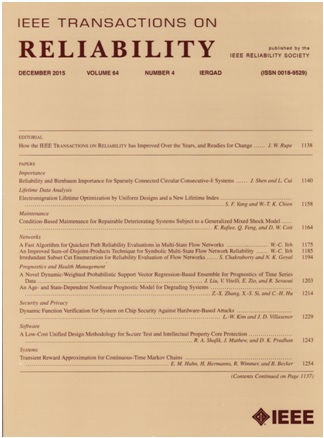Modeling Continuous Sensor Signals and Discrete Maintenance Events Using the Action Specific-Input Output Hidden Markov Model
IF 5.7
2区 计算机科学
Q1 COMPUTER SCIENCE, HARDWARE & ARCHITECTURE
引用次数: 0
Abstract
Equipment downtime is a significant challenge for many industries. In oil extraction, downtime costs can be as high as $250 000 per day. To prevent downtime, technicians manually interact with the equipment or monitor its health using sensory signals. Sensory data indirectly ascertain equipment health, while manual actions (inspections or repairs) provide a direct and precise insight but are time-consuming and costly. Thus, efficiently leveraging sensory data and outcomes of manual actions to accurately estimate the health of their equipment while finding the critical time points to schedule repairs and minimize the overall downtime is a crucial challenge faced by industries. In this article, we present a novel joint modeling approach called the action specific-input output hidden Markov model (AS-IOHMM) that integrates real-time sensor data and discrete health state information obtained by manual actions to aid prognosis and decision making of industrial equipment. In contrast to existing models that assume nondecreasing degradation without considering maintenance actions, AS-IOHMM estimates the impact of different maintenance actions on equipment health by learning action-specific transition probability matrices. We assess the effectiveness of AS-IOHMM through a numerical case study and validate its performance using mud-pump maintenance and sensory data from an oil rig, demonstrating enhanced prognosis ability and cost reduction of 7–15% over existing methods.用动作特定输入输出隐马尔可夫模型建模连续传感器信号和离散维护事件
设备停机是许多行业面临的重大挑战。在石油开采中,每天的停机成本可能高达25万美元。为了防止停机,技术人员手动与设备交互或使用传感信号监控其健康状况。感官数据间接确定设备的健康状况,而手动操作(检查或维修)提供直接和精确的洞察,但耗时且成本高昂。因此,有效地利用感官数据和人工操作的结果来准确估计设备的健康状况,同时找到安排维修的关键时间点,并最大限度地减少总体停机时间,是行业面临的一个关键挑战。在本文中,我们提出了一种新的联合建模方法,称为动作特定输入输出隐马尔可夫模型(AS-IOHMM),该模型集成了实时传感器数据和人工操作获得的离散健康状态信息,以帮助工业设备的预测和决策。与不考虑维护行为而假设退化不减少的现有模型相反,AS-IOHMM通过学习特定于行动的转移概率矩阵来估计不同维护行为对设备健康的影响。我们通过数值案例研究评估了AS-IOHMM的有效性,并使用泥浆泵维护和石油钻井平台的传感数据验证了其性能,证明了与现有方法相比,AS-IOHMM的预测能力增强,成本降低了7-15%。
本文章由计算机程序翻译,如有差异,请以英文原文为准。
求助全文
约1分钟内获得全文
求助全文
来源期刊

IEEE Transactions on Reliability
工程技术-工程:电子与电气
CiteScore
12.20
自引率
8.50%
发文量
153
审稿时长
7.5 months
期刊介绍:
IEEE Transactions on Reliability is a refereed journal for the reliability and allied disciplines including, but not limited to, maintainability, physics of failure, life testing, prognostics, design and manufacture for reliability, reliability for systems of systems, network availability, mission success, warranty, safety, and various measures of effectiveness. Topics eligible for publication range from hardware to software, from materials to systems, from consumer and industrial devices to manufacturing plants, from individual items to networks, from techniques for making things better to ways of predicting and measuring behavior in the field. As an engineering subject that supports new and existing technologies, we constantly expand into new areas of the assurance sciences.
 求助内容:
求助内容: 应助结果提醒方式:
应助结果提醒方式:


